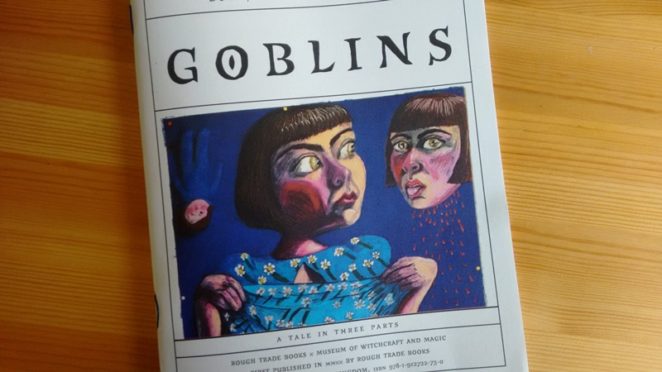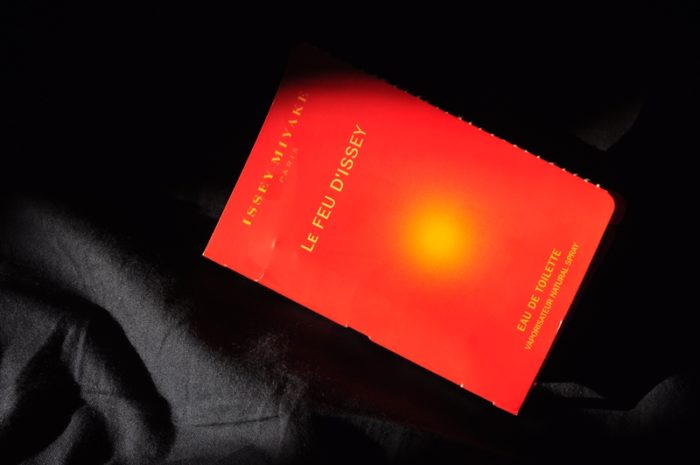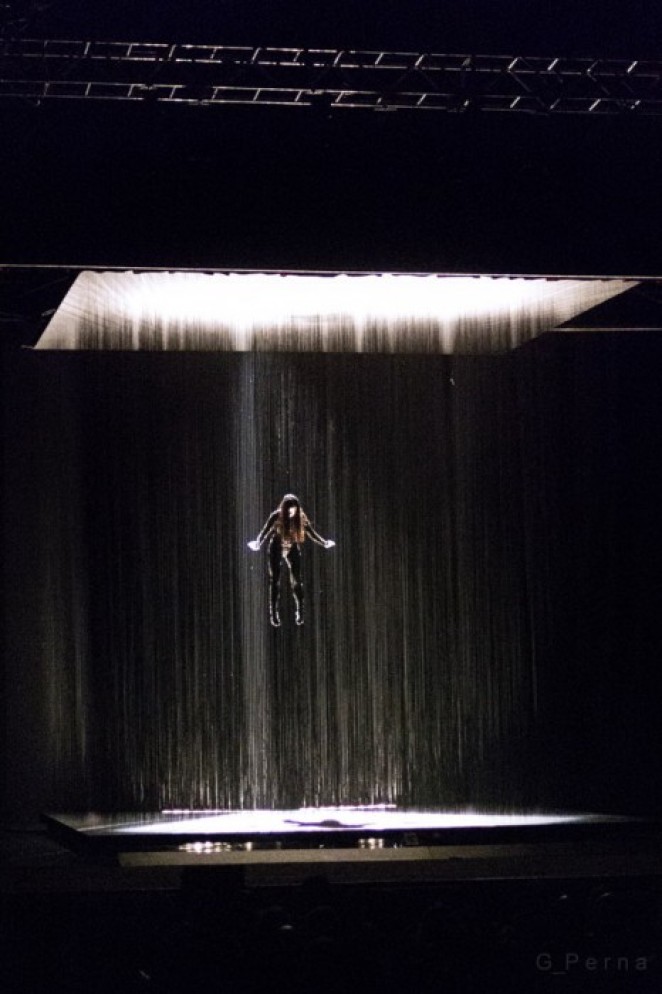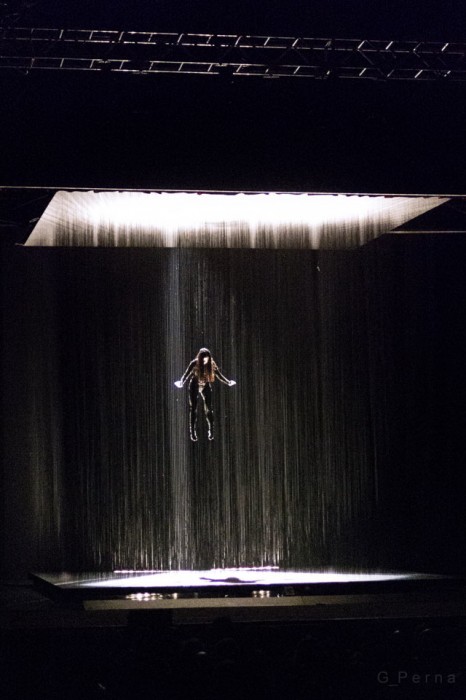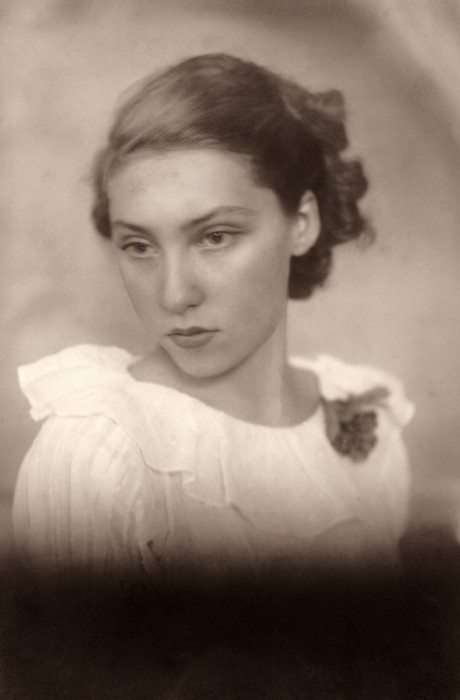Originally published in Asymptote.
There’s joy in repetition
—Prince
In January 2020 I was due to speak at the British Library. It was a Holocaust Memorial Day event, and I was there to talk about my co-translation—with Anna Błasiak—of a book entitled Renia’s Diary: A Young Girl’s Life in the Shadow of the Holocaust, the wartime diary of a young Polish Jew, Renia Spiegel. The third speaker at the event was artist and writer Edmund de Waal, whose astonishing book The Hare with the Amber Eyes I read when it first came out. Half preparing for the event and half procrastinating, I watched Make Pots or Die, a documentary about de Waal’s work.
De Waal spoke about his work as evidence of spending time—how he places his pots in the vitrines in which they’re displayed very quickly and it’s almost always wrong or almost right, and then he needs to come back and look at them, look at them for a very long time, because there’s an enormous difference between almost right and right. The process struck me as familiar; as a translator, I think about the weight of a comma. I put it in, I take it out, I put it in, I take it out, I put it back in. I put a semicolon at the end of a sentence instead of a full stop, change it back to a full stop. I switch the second and the fifth words around. I change a noun to its diminutive, reconsider.
Once I had that thought, de Waal’s pots started to look like drafts. Perhaps he’s iterating. To me, every pot within an installation looks like a re-translation of a word, sentence, thought, text. The vitrine, taken together, is a mind subtly improvising on a theme. The difference is that in a de Waal vitrine, the audience can see many iterations, many expressions of a thought, if this is what they are; the reader of a translation only sees the last version, the one the translator (and, possibly, her editor) deemed the best, whatever that means.
What would a translation look like if every draft of every sentence, or even of just one sentence, was present at the same time? Unreadable, of course, but for a translator—how informative, how interesting. De Waal: “Repetition isn’t about repeating the same thing. It’s about minute differences between each moment, between each sound, between each object that you’re making.” Having to appreciate every shade of a sentence, calibrate every word choice so that meaning, register, mood, rhythm, emotional effect all work, and putting all those carefully chosen words in an order that suits the sentence, the paragraph, the whole book—all this makes translation seem impossible, but as some point you make the decision. You place pot A next to pot F and slightly behind pot R, and then lean tile N against pot V and somehow, you’ve arrived.
In 2016, I had the pleasure of participating in the writing and literary translation summer school held at the British Centre for Literary Translation at UEA. I was a part of the multilingual prose group, led by Daniel Hahn, who translates from Portuguese, Spanish, and French. We spent a fascinating week tormenting texts, unpicking their seams and checking what’s inside. I think the best summary of what we did happened early in the week; we were looking at a passage of Harry Potter, translated into all the languages we had within the group (probably seven or eight) and trying to back-translate them into English, look for traces of the original in the translations. Once we arrived at what we thought was a competent back-translation, Danny read us the actual passage from JK Rowling’s book. At a previously much-discussed juncture, a comma appeared where we had decided there wouldn’t be one; when Danny read out, “comma,” the whole room gasped. We’d have probably clutched our pearls if we’d been wearing any. We also cheered when it turned out that there was a “bobble hat” in the original passage, as we’d guessed. This evidence that we’d sensed something about the text that allowed us to make the correct linguistic choice was exhilarating—felt like a slam dunk. Those moments when details slide right into place happen with straightforward translation, too, even where there’s nothing to check against: just the original, the blank page, and the translator’s knowledge, experience, intuition, artistry.
Two other perfect examples of the benefit in looking at subsequent translation drafts of the same sentence also came to me through Danny. When tweeting for the TranslationTalk account, he made two threads which showed the progression of his thinking about two short passages; the first sentence from a book by Juan Pablo Villalobos, and the opening paragraph by José Eduardo Agualusa. To me, those two threads show what translation is. It’s thinking about meaning, register, rhythm, grammar, syntax, considering the tiny scale of the word or the larger scale of how a sentence works within a larger passage, or (as Danny mentions in the comments to the first thread) in the context of the next pages, where the sentence returns. It’s second-guessing your own decisions and re-arranging the words, attending to their tone until they resonate correctly. This is that all-important “slow, incremental change” (de Waal’s words)—the weighing of an adverb against an adjective, and looking again at all those commas.
***
Still, there’s more to the process, of course; in the documentary, De Waal also speaks about the music he listens to when working, commenting: “Doesn’t it make you want to make things?” The most beautiful moments of the process of translation occur when I’m buoyed up by the propulsive structures of Portico Quartet or the sea-waves of Michael Nyman’s soundtrack for The Piano, and the rhythm of the sentences and keystrokes just flow. Sometimes, as I write, I feel like swaying, like a musician at her instrument. I’m not sure I can produce a good translation on the strength of that inspired, fluid process, that intoxicating beginning—but it’s the best feeling.
What do the hands of translators do? Our bodies are libraries which store vocabularies of touch, movement, contact, gesture, withdrawal—which bring us some of the most affecting moments in literature (and life), so we’d do well to be attentive to them. I’m always happily interested to hear other translators talk about how they use their own bodies when translating: re-enacting fight scenes in their source texts, for example, to make sure they’ve got the placement of the limbs right, or reading their final drafts out loud, so that the ear and the mouth and the breath tell them when something needs changing. Richly, vividly translated body language is, to me, an important part of building a resonance between the book and the reader; our own bodies, as translators, inform that work.
But apart from the materiality of translators, I’ve been thinking about the tangible realities of translated matter. During the British Library event, we talked about the book as object; in the case of Renia’s personal diary this would have been especially relevant. Anna and I never saw the original—we translated a PDF of the Polish edition, published in a small print run by Renia Spiegel’s Foundation. I wonder about it now, though; how it would have felt to see her handwriting mature along with her poetry and prose; to be able to see whether she pressed her pen more strongly on the page when scared, or worried; to study her doodles, some of which were reproduced in the Polish edition. Suddenly I have a strong urge to put my palm on her diary—perhaps as a gesture of companionship, consolation. The institution of a manuscript, as in a handwritten text, might be almost lost to the process of publishing, but in this case the manuscript was (is?) everything. I think about Renia’s hands hugging her diary close in the Przemyśl ghetto. Seventy-eight years after she was killed, I catch myself hugging the big hardback edition of mine and Anna’s English translation of her words.
***
The book I’m translating now—Marcin Wicha’s Things I Didn’t Throw Out (forthcoming from Daunt, title provisional)—thinks deeply about objects and what they tell us about the people who owned them. Specifically, about the author’s mother; the book was written in the wake of her death, and is a clear-eyed recollection of her built around the items, phrases, and values she left behind. The objects in his book are deeply embedded in a specific time and place: the Poland of communism and transformation. I remember going on a holiday to Bulgaria with William Wharton’s Last Lovers (probably when much too young for it)—the memory of the foiled texture of the cover, sometimes peeling a bit in the corner, means that I now know intimately, haptically, what Wicha means when he describes the covers of that particular Polish publisher. The plastic of my aunt’s rotary phone, slightly matted by years of touch, dust and grease, is what I can almost feel under my fingertips when Wicha talks about trying to get through to someone at the water board so that his mother can shout at them about a water shortage. I’m not saying this sort of knowledge is necessary for producing a good translation, and of course there are texts which don’t lend themselves to this approach; I’m saying it adds to my sensory lexicon, and that, in turn, informs my actual vocabulary.
“[. . .] to build intimacy with another person is to become ‘close’ to them. [. . .] the root of intimacy [is] an understanding of the other’s background and history, and so too of their personal motivations and desires,” writes Sophie Collins in her excellent essay entitled “Erasing the signs of labour under the signs of happiness: ‘joy’ and ‘fidelity’ as bromides in literary translation.” In it, she proposes “intimacy” as an alternative to “fidelity” in literary translation. “In terms of approaches to translation, then, ‘intimacy’ surely describes work that exhibits such closeness, meaning that an ‘intimate translation’ might be one that exhibits a heightened contextualisation of its source text for the reader.” I can’t help but think that this “heightened contextualisation” can only be amplified by a solid grounding in the material reality of the source text—which the translator might choose to, if it’s possible, acquaint herself with, and how its world might feel under her hands and around her body.
This attention to the source text is something I’ve been thinking about a lot. A strong factor in a positive evaluation of a translated text, whether in reviews or literary prize verdicts, seems to be its readability, its self-sustainability in its target language. It’s broadly understood as desirable that a translated book reads “as if it was originally written in English.” But I’d like more focus on the source text—although that might be a tall order in a reading culture which is frequently monolingual. After all, the task of reading the text is just as important for the translator as that of writing it again. Perhaps because I grew up within the language I translate from, not into, I feel the source text tug at my sleeve. It can bring up my own memories, familiar realities, textures, smells. I feel I want to remain close to (intimate with?) both the source and the target texts, to hold hands with both, leaning this way or the other as my judgment of the process and its outcomes dictates. And maybe, through that, meet the English-language reader halfway too, having stretched her a little.
***
I’m translating Wicha’s text from the Polish hardback edition—beautifully, austerely published by Karakter. The book rests on a tablet stand, and the pages are held open by bulldog clips. Their grip is quite strong and they leave blunt bitemarks on the tops of both margins of my book. Turning the page becomes a tiny ritual of unclipping and re-clipping; I get into the habit of pressing my fingertips to the bitemarks, to smooth them out a tad, but mainly to reassure myself of my presence within the book. This is how much I’ve done. This is progress. This is work, time, reflection, effort, and (hopefully, eventually) effortlessness.
